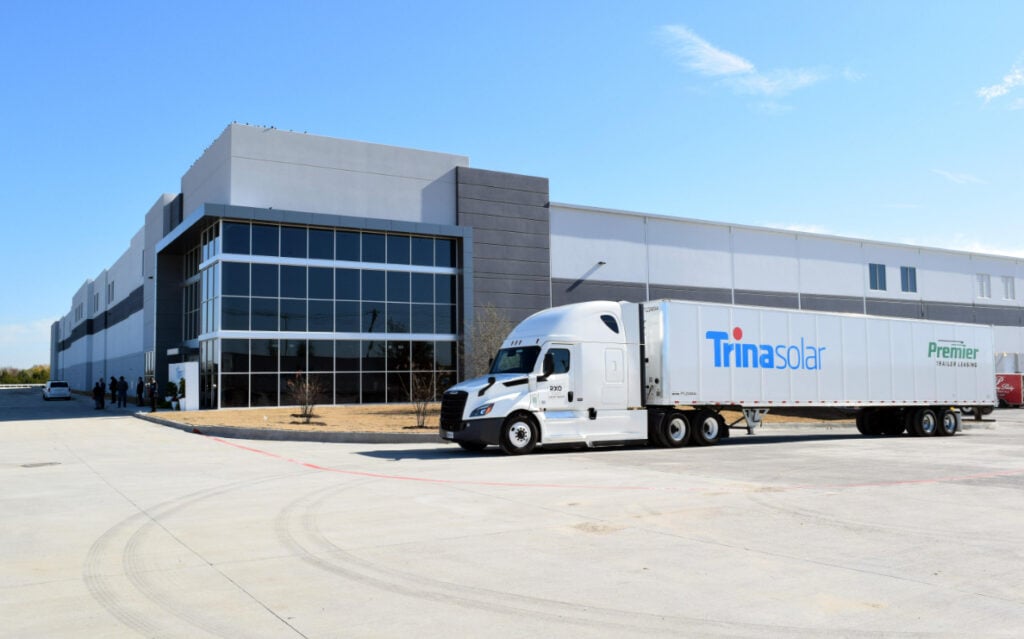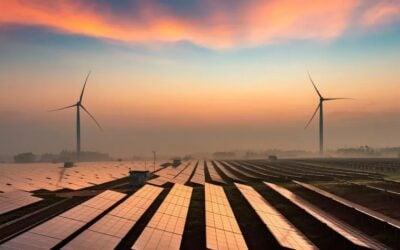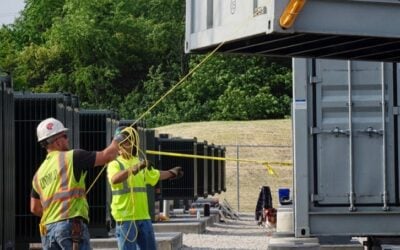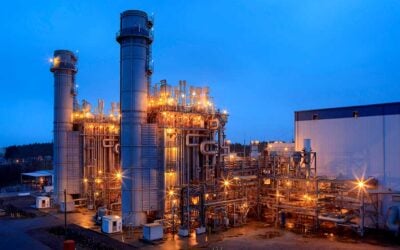
NYSE-listed battery startup Freyr has pivoted strategy and acquired a 5GW solar module facility in Texas, US, from Chinese firm Trina Solar, the same day that Donald Trump was declared to have won the presidential election (6 November).
Freyr will pay Trina a total US$340 million with a mix of cash, loan repayments and loan notes, and stock amounting to 9.9% of Freyr’s shares, for the facility which started commercial production a week ago (more on what this means for Freyr further down).
The announcement came on the same day that Kamala Harris conceded defeat to Donald Trump, leading some to speculate that one driver for Trina Solar to sell up is a potential ramp-up in measures against Chinese companies.
“Looks like Trina is taking the risk of Congress cutting off access to the 45X manufacturing tax credit for Chinese companies seriously,” Michael Parr, CEO of trade body The Ultra Low Carbon Solar Alliance, wrote on business networking site LinkedIn. In July, Parr wrote a piece on efforts to reduce the carbon intensity of solar manufacturing for our sister site PV Tech (Premium access).
Try Premium for just $1
- Full premium access for the first month at only $1
- Converts to an annual rate after 30 days unless cancelled
- Cancel anytime during the trial period
Premium Benefits
- Expert industry analysis and interviews
- Digital access to PV Tech Power journal
- Exclusive event discounts
Or get the full Premium subscription right away
Or continue reading this article for free
The 45x tax credit is part of a swathe of tax credit incentives for the clean energy industry brought in by the Biden-Harris administration’s Inflation Reduction Act. Some have speculated that Trump will seek to wind back that US$369 billion package – for all, not just Chinese companies – although much of the manufacturing projects, including Trina’s, are in Republican-majority states.
What seems more likely is that Trump will increase tariffs on goods from China, including batteries. The start of the year saw tariffs on batteries from China increased from 7% to 25%, and numerous industry sources indicated that could well increase under a Trump administration, in a series of articles in the run-up to the election in ESN Premium (here, here and here).
Other measures against Chinese battery companies which have been floated during the previous administration, which could ramp up under Trump, including the cancellation of a Department of Energy (DOE) grant to Microvast and a call by Republican lawmakers to block shipments from CATL and Gotion for alleged forced labour in their supply chains.
The timing of the deal between Freyr and Trina could potentially be coincidental. A deal of that scale would obviously take months, though a Trump win was also foreseeable. Some have speculated that Trina needs cash, having seen its financial performance suffer this year, part of a global PV manufacturing downturn covered extensively by PV Tech. It reported a CNY847 million (US$120 million) loss and revenues down around 22% in Q3 2024.
For an in-depth look at what Trump could mean for US solar, see PV Tech‘s article here.
Note that Trina is also a major battery cell and BESS manufacturer.
Pivot away from batteries to solar for Freyr
The deal, covered in more depth by our sister site PV Tech, sees Freyr pivot strategy to becoming a vertically integrated solar manufacturer in the US, with additional plans to set up a solar cell manufacturing facility there, and a new, US-focused management team.
Its plans for battery cell manufacturing in the US also seem have been deprioritised, with a presentation on the deal only mentioning ‘long-term plans’ to manufacture battery energy storage systems (BESS) as part of a ‘solar plus storage’ strategy
Freyr was originally founded to build lithium-ion battery cells in Europe, primarily for BESS for which most of its offtake deals were announced, but that appears to have now all but ended.
Concurrent with the Trina news, it said that it has ended all licensing and financial obligations with semi-solid battery tech firm 24M, the partnership on which the commercialisation of its flagship Giga Arctic gigafactory in Norway was based. Giga Arctic, and its other European projects, have been on hold for a year.
Tom Jensen has moved from Freyr group CEO to Freyr Europe CEO where will ‘advance value optimisation of the European portfolio’ including transitioning it to ‘less capital-intensive, value accretive business models’.
“These include high value adjacencies to the battery value chain including digital battery platforms
and data center opportunities for Giga Arctic balanced by Battery Energy Storage Solutions,” the announcement said.
Energy-Storage.news has reached out to both Freyr and Trina Solar for comment.





